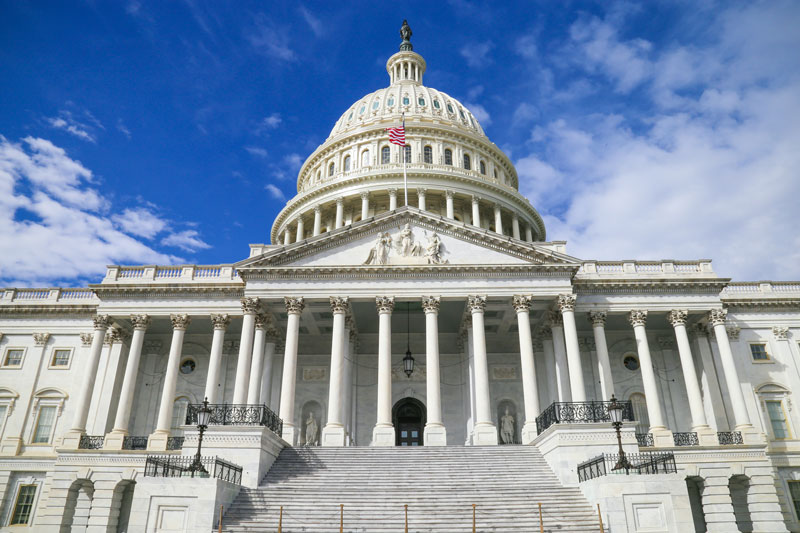In a recent Fiduciary 15 webinar, we tackled the timely topic: “Unpacking the SECURE2.0 Act of 2022.” For anyone who might have missed it or is simply interested in a summary of the key points, we offer this blog post as well.
Congress passed the original SECURE Act in 2019 to help provide Americans with greater access to employer-sponsored retirement plans. Formally known as the Setting Every Community Up for Retirement Enhancement Act, it was seen as the most significant retirement plan legislation since the Pension Protection Act of 2006.
SECURE 2.0, just passed by Congress and signed into law by President Biden in late December, is a pivotal piece of retirement legislation in its own right — going further than the original by focusing on how plans can be more comprehensive and responsive to the needs of modern-day employees.
There’s so much to unpack that we could spend hours talking about the new provisions. But for the purpose of the webinar, we focused on the more modest changes taking effect this year, rather than the momentous changes coming down the pike in 2024 and 2025. These are the elements we believe will most likely impact retirement plan providers in 2023:
- Later required minimum distributions: Prior to the original SECURE Act, required minimum distributions were triggered at age 70 ½. The SECURE Act changed the trigger to age 72, and SECURE Act 2.0 has now raised it to 73. However, this change only impacts participants who had not yet reached age 72 as of Dec. 31, 2022. Accordingly, it applies to a limited group in 2023 — those reaching age 72 this year. The trigger will be raised again in 2033 to age 75.
- Lower excise tax for RMD failures: According to previous law, RMD failures would result in a 50% excise tax on the participant. SECURE 2.0 reduces that tax to 25% for taxable years beginning after Dec. 29, 2022, and states it can be further reduced to 10% if the failure is corrected within a two-year window. The IRS also continues to offer a voluntary correction program application process that permits requests to waive the entire tax.
- Roth employer contributions (optional): Prior law dictated that all employer contributions needed to be made on a pre-tax basis. SECURE 2.0 states that after Dec. 29, 2022, employers can allow participants to elect that some or all employer contributions be made on a Roth basis. Employers aren’t required to offer this option, and any such Roth contributions would need to be fully and immediately vested. We believe there will likely be a delay in widespread utilization, due to related changes that would need to be made in payroll and reporting practices.
- Participant self-certification of hardship: Previous law had set a high bar for plan fiduciaries to collect information that substantiates and memorializes employee hardships or unforeseeable emergencies. In 2017, the IRS issued an internal memorandum setting forth a process for participant self-certification, but it was merely guidance and not law. For plan years beginning after Dec. 29, 2022, SECURE 2.0 provides codification of employee ability to self-certify. This might not make a significant practical impact since the 2017 memo had been largely accepted as instructive, but it should help document providers and record-keepers solidify their processes.
- Incentivizing participation: According to prior law, an “exclusive benefit rule” limited the ability of plan sponsors to incentivize participant deferrals (other than matching contributions). SECURE 2.0 enables employers to provide “de minimis” (minimal) financial incentives, such as gift cards, for plan years beginning after Dec. 29, 2022. These incentives may not be paid for with plan assets, and the dollar threshold for them has yet to be established.
- Relaxed disclosures to unenrolled participants: Previous law recognized eligible employees as plan “participants” even if they declined to participate. As a result, employers were obligated to provide these employees with all the same disclosures required for active participants. SECURE 2.0 eliminates that requirement for plan years beginning after Dec. 31, 2022, stating that “unenrolled participants” only need to receive an annual notice of eligibility to participate. This change will likely require employers to coordinate with record-keepers/third-party administrators initially, but should reduce time and expense in the long run.
On the Horizon
More significant changes coming in 2024 include: 1) matching student loan debt repayments, 2) offering emergency savings accounts, 3) higher mandatory cash-out limits, and 4) special distributions for emergencies or domestic abuse.
Among the substantial changes becoming effective in 2025 are increased catch-up contributions for participants between ages 60 and 63, and more significant coverage considerations for long-term part-time employees.
Steps To Take in 2023
What are the most important steps for employers to take this year? We recommend the following:
- Understand the RMD changes (to age 73).
- Consider the optional 2023 rules (Roth employer contributions, reduced disclosures for unenrolled participants, hardship self-certification and gift cards to incentivize enrollment).
- Count part-time employees’ hours (in advance of the 2025 requirement for long-term part-time employees).
- Reimagine the 2024 options and consider how to refine your plan’s attractiveness and effectiveness.
The information above provides a quick primer on what SECURE 2.0 entails, but please contact us to learn more about the wide-ranging provisions and how we can help your plan best serve current employees and attract top talent.

